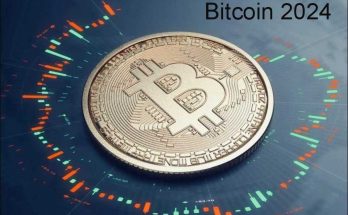Bitcoin halvings. The Bitcoin block reward halves every 210,000 blocks or approximately every 4 years. This regular reduction in Bitcoin’s inflation rate is called the “halving”
The Bitcoin Halving is a pre-programmed event that reduces the reward given to crypto miners by half approximately every four years. The Halving is essential because it ensures that the supply of Bitcoin is kept in check and prevents inflation. The reduction of mining rewards means that the demand for Bitcoin is expected to increase, and its value is likely to surge in response.
It is anticipated to happen every 210,000 blocks or roughly every four years, with the most recent halving occurred in May 2020, reducing the reward from 12.5 to 6.25 BTC per block. The Bitcoin Halving plays a crucial role in the long-term viability and scarcity of Bitcoin.
November 28th, 2012: The First Slice
BTC Price: $12.20
The first halving sliced off the first 50% of the Bitcoin mining reward – from 50 to 25 Bitcoins per block. Back then, the impact of the halving was still not priced in. The community was watching anxiously, as the closing price on the halving day was ($12.20). In the months after the first halving in 2012, the network hash rate and difficulty declined as less profitable miners turned off machines to reduce costs.
However, by early 2013, Bitcoin kicked off its first major bull run, surging from $13 to over $1,000 by year’s end. The fears of miner capitulations were proven largely unfounded. The network hummed along, and the Bitcoin community learned an early lesson: Halvings are bullish for the Bitcoin network and the price of Bitcoin.
July 9th, 2016: Bracing for a Boom
BTC Price: $640.56
The second halving reduced the block reward by another 50% – from 25 to 12.5 BTC. The community anticipated another bull run driven by the halving, as the memories of 2012 were still fresh. Many predicted a price boom. But some also warned that a smaller mining reward could depress mining profits and harm the network. We all know what happened next…
Bitcoin had an incredible bull run in 2017. Its price went up to nearly $20,000 by the end of the year, and this was the first time cryptocurrencies were in the global limelight. That set the stage for an even bigger bull run four years down the road…
May 11th, 2020: One Million More
BTC Price: $8,605
The third halving halved the mining reward again. So predictable, yet so ground-breaking. With the mining reward slashed to 6.25 BTC per block, Bitcoin was getting ready for another bull run. Speculation abounded about growing institutional adoption and Bitcoin as a hedge for inflation.
After the halving, the price of Bitcoin surged once again. The community was ready by this time – they had learned the lesson already. Halving day was eagerly anticipated but the real celebrations did not kick off until the incredible bull run in 2021. Many anticipate history will repeat itself in 2024.
2024 and Beyond
BTC Price: $28,715.71 (October 19th, 2023)
The next halving, who would’ve guessed it, will reduce the mining reward again – to 3.125 BTC per block. The Bitcoin community is eagerly anticipating this milestone. It will make Bitcoin’s supply even scarcer and, hopefully, introduce a new bull market.
Bitcoin’s built-in halvings stand out as a unique feature that adds predictable control over its supply issuance. Other cryptocurrencies have tried to copy its model, but no other blockchain has had the same success with halvings and inflation reductions as Bitcoin.
Of course, some critics have argued that halvings are unnecessary, and Bitcoin’s supply could have simply been capped at 21 million with all units released immediately. But Satoshi wisely recognized the importance of gradual, rule-based issuance and its role in increasing adoption and fairness. Bitcoin would not be where it is today without halvings.
Halvings also forge links between each generation of Bitcoin users. Those who participated in 2012’s first halving have watched the community grow and pass new milestones. And those who joined post-2020 look to earlier halvings for context on Bitcoin’s roots. Halvings remind the community of how far we’ve come, and where we have yet to go
Visits: 29



